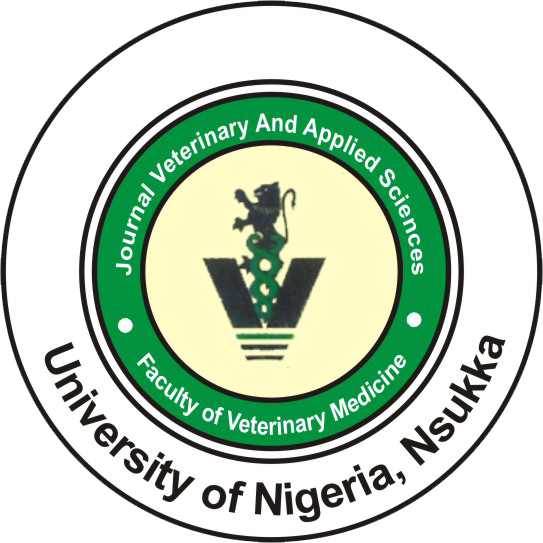University of Nigeria
ISSN: 2315 - 6856
e-ISSN: 2636 - 5553
Journal volumes
Powered by: RockSystems Global Services Ltd.
rocksystemsglobal@gmail.com (+2348035271306)
www.rocksystemsglobal.com
Volume 14, Issue 1: 2024 - Article 133
Abstract
Turkey production in Nigeria and Africa at large has been influenced by many factors, some of which include diseases, intense climatic changes and scarcity of feed stuffs. Ionophore antibiotics are commonly used as feed additives for the prevention of coccidiosis in poultry. This case report is on ionophore poisoning in adult turkeys. A complaint of possible ionophore poisoning in a turkey flock of 119 was received at the University of Nigeria Veterinary Teaching Hospital (UNVTH) Nsukka, Nigeria. Dead turkeys were presented. History was taken and post mortem examination of dead turkeys was done following standard procedures. Tissue samples were collected for further bacteriology and histopathology investigation. The farm was also visited and it was observed that the feed given to the turkeys bore a label showing that it contains the ionophore, Salinomycin (Bio-Cox®). The population of the affected birds comprised 48 fully mature adults, 41 young adults and 18 poults. Clinical signs observed in affected adult turkeys were incoordination, leg weakness, abnormal gait, inability to stand, ruffled feathers, diarrhoea, paralysis and death. Necropsy findings included hydropericardium, multifocal areas of necrosis in the liver, haemorrhagic intestinal ulcers, egg peritonitis and atrophy of the spleen. Histopathology revealed degenerative changes in the liver parenchyma and necrosis of the liver hepatocytes. In the kidney the proximal and distal tubules were swollen with the epithelium appearing necrotic. Bacteriological culture as well as parasitological examinations showed no microbial growth and no parasites. Ionophore poisoning was suspected based on history, clinical signs, necropsy findings, and confirmed based on the observation of immediate recovery of the affected adult turkeys following withdrawal of the offending ionophore containing feed and introduction of new brand feed that did not contain ionophore antibiotics.
Keywords: Ionophore toxicosis; Salinomycin; Poisoning; Turkeys; Pathology.
How to cite this article:
Omeke JN, Ezema WS and Shoyinka SVO (2024). Ionophore (salinomycin) toxicosis in adult turkeys: A
case report. Journal of Veterinary and Applied Sciences, 14(1): 411 – 417.
*Correspondence: E-mail: jacinta.omeke@unn.edu.ng Phone: +2348037932717

Ionophore (Salinomycin) toxicosis in adult turkeys: A case report
Jacinta N. Omeke*, Wilfred S. Ezema and Shodeinde V. O. Shoyinka
Department of Veterinary Pathology and Microbiology, Faculty of Veterinary Medicine, University of Nigeria, Nsukka, Enugu State, Nigeria.
Download .pdf copy here >>






